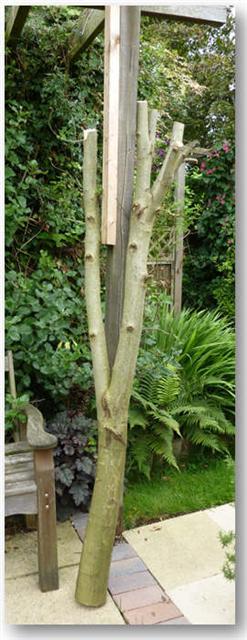 A self sown ash tree growing in our garden had managed to reach quite a significant size before we noticed it hiding behind a buddleia tree. This was likely to cause us problems as ash trees are very prolific. They cast hundreds of seeds each of which have a good chance of growing into another tree. So it had to go.
A self sown ash tree growing in our garden had managed to reach quite a significant size before we noticed it hiding behind a buddleia tree. This was likely to cause us problems as ash trees are very prolific. They cast hundreds of seeds each of which have a good chance of growing into another tree. So it had to go.
Once it was chopped down we were left with a fairly large piece of wood. For a while we had planned to make a nesting log for solitary bees and now we
After a little research to check requirements work begun.
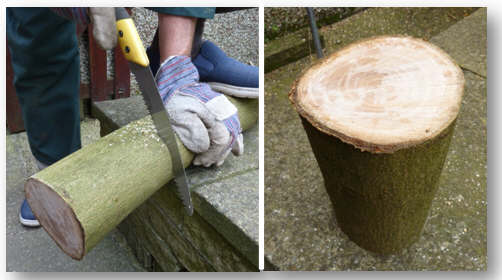
Firstly the trunk had to be cut into slices. The slices needed to be at least 20 cm deep as the nesting chamber needs to be up to 17 cm or as deep as possible and mustn’t go all the way through the log.
We knew that the holes for the bees to nest in had be variety size holes but were surprised to read that the smallest hole should be as little as 2 mm in diameter.
The largest should be no bigger than 10 mm in diameter so a selection of drill bits between these sizes was collected before drilling could begin.
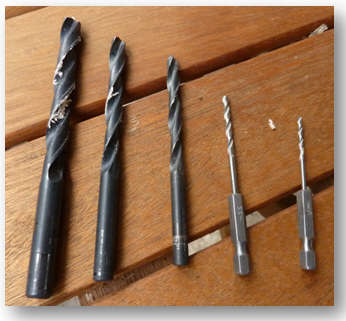
Holes were drilled in one end of the log.

The nesting holes were drilled as deep as the drill would allow and the sawdust cleared from each hole. The bees won’t enter a hole if it contains sawdust or splinters.
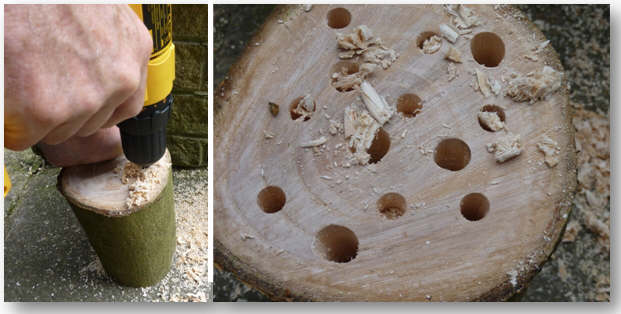
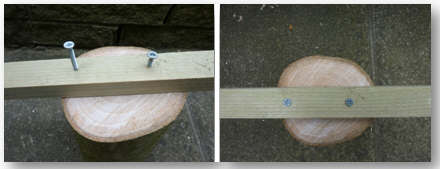
The completed nesting log was fairly heavy and so a method had to be devised to fix it to a suitable upright. A piece of wood lath was cut long enough to allow for fixing a screw above and below the nesting box as shown in the photograph on the left.
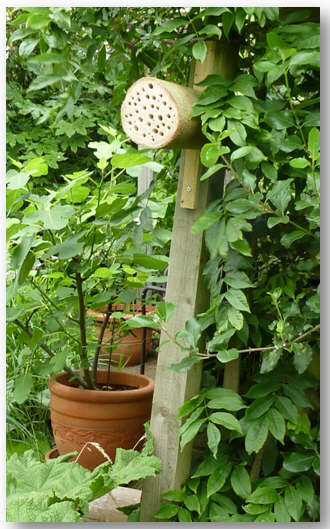
The nesting block needs to be fixed at least 1 metre from the ground with the nesting holes facing due south in full sun so that the log will warm up in the sunshine. The front of the block needs to be clear of any plant material.
We chose to fix to the upright of a pergola.
All we need now is to wait for our first guests to arrive.
More information about solitary bees and photographs can be accessed from the following links:
http://www.animalcorner.co.uk/insects/bees/bee_solitary.html
To read more about how we encourage biodiversity on our plot and in our garden click here
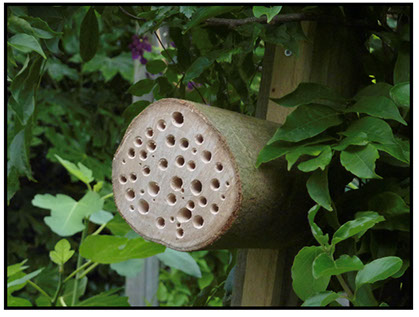 Once the female solitary bee has emerged from her pupa and mated with a male she is on her own. The female constructs a nursery consisting of a series of cells within an appropriate tunnel. In each cell she lays an egg and deposits some pollen and nectar for the larva to feed on. She then seals the cell and lays another egg to form a chain of cells. If the bee nests in wood the larva that hatch in the cells closest to the entrance will become male.
Once the female solitary bee has emerged from her pupa and mated with a male she is on her own. The female constructs a nursery consisting of a series of cells within an appropriate tunnel. In each cell she lays an egg and deposits some pollen and nectar for the larva to feed on. She then seals the cell and lays another egg to form a chain of cells. If the bee nests in wood the larva that hatch in the cells closest to the entrance will become male.







